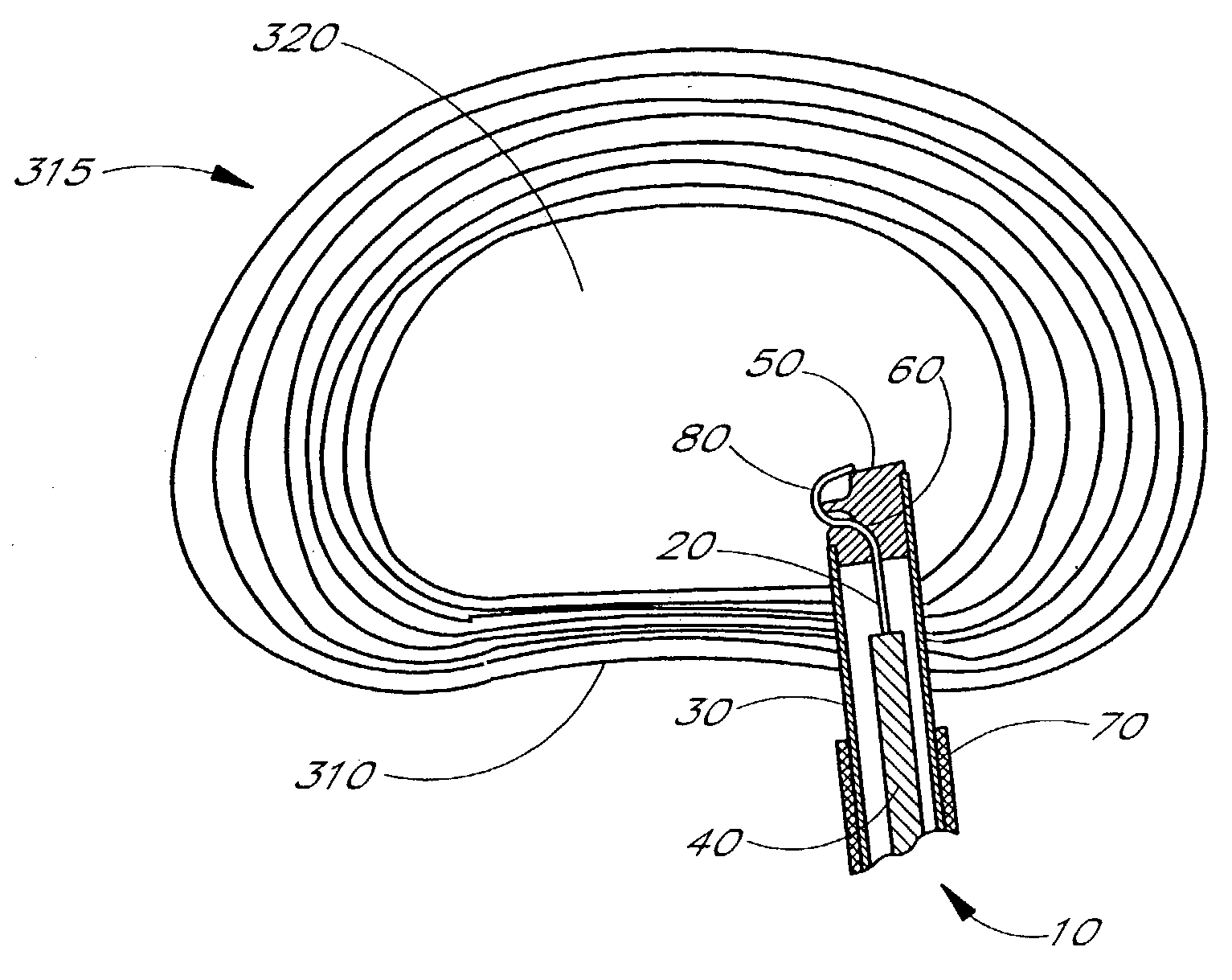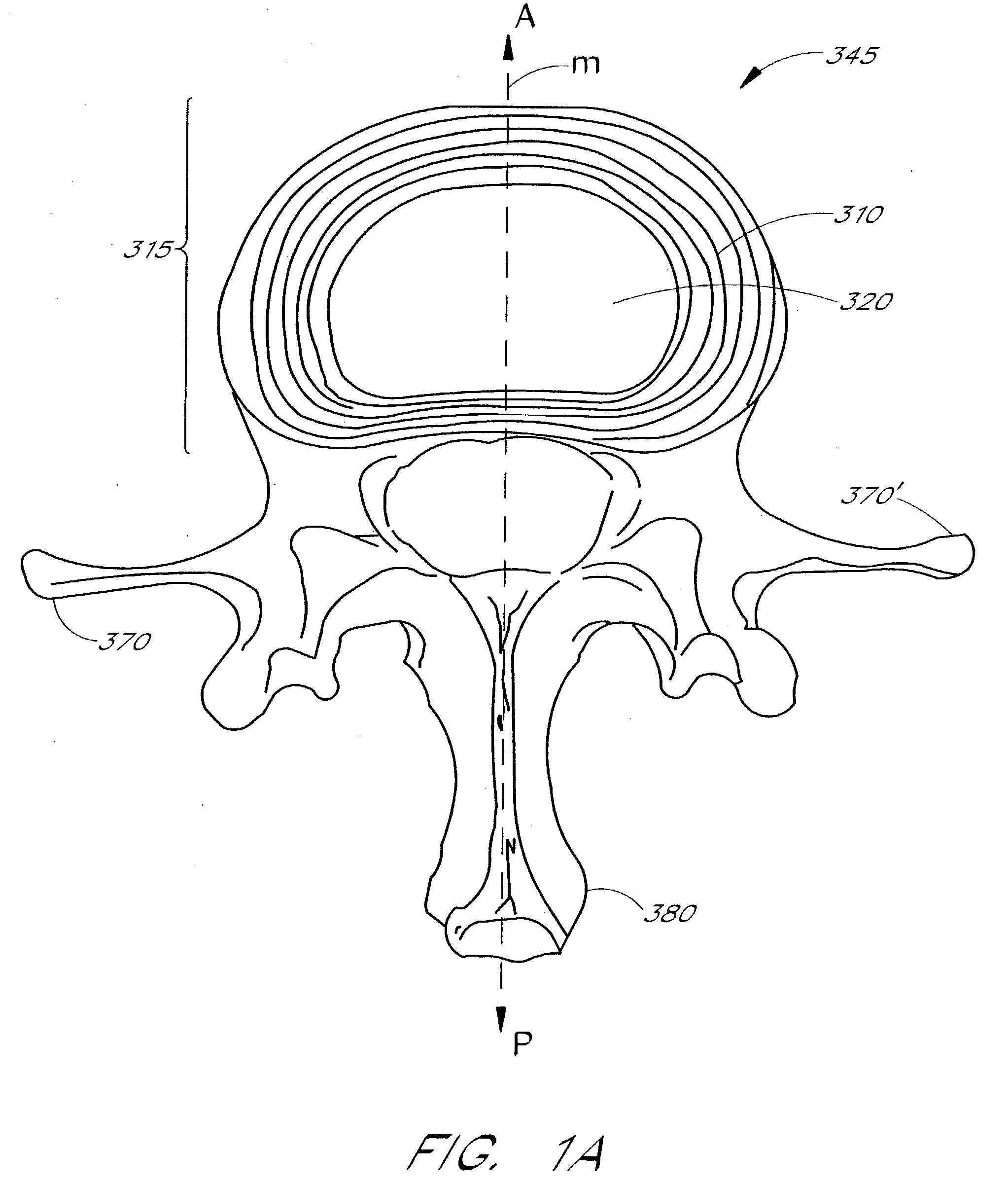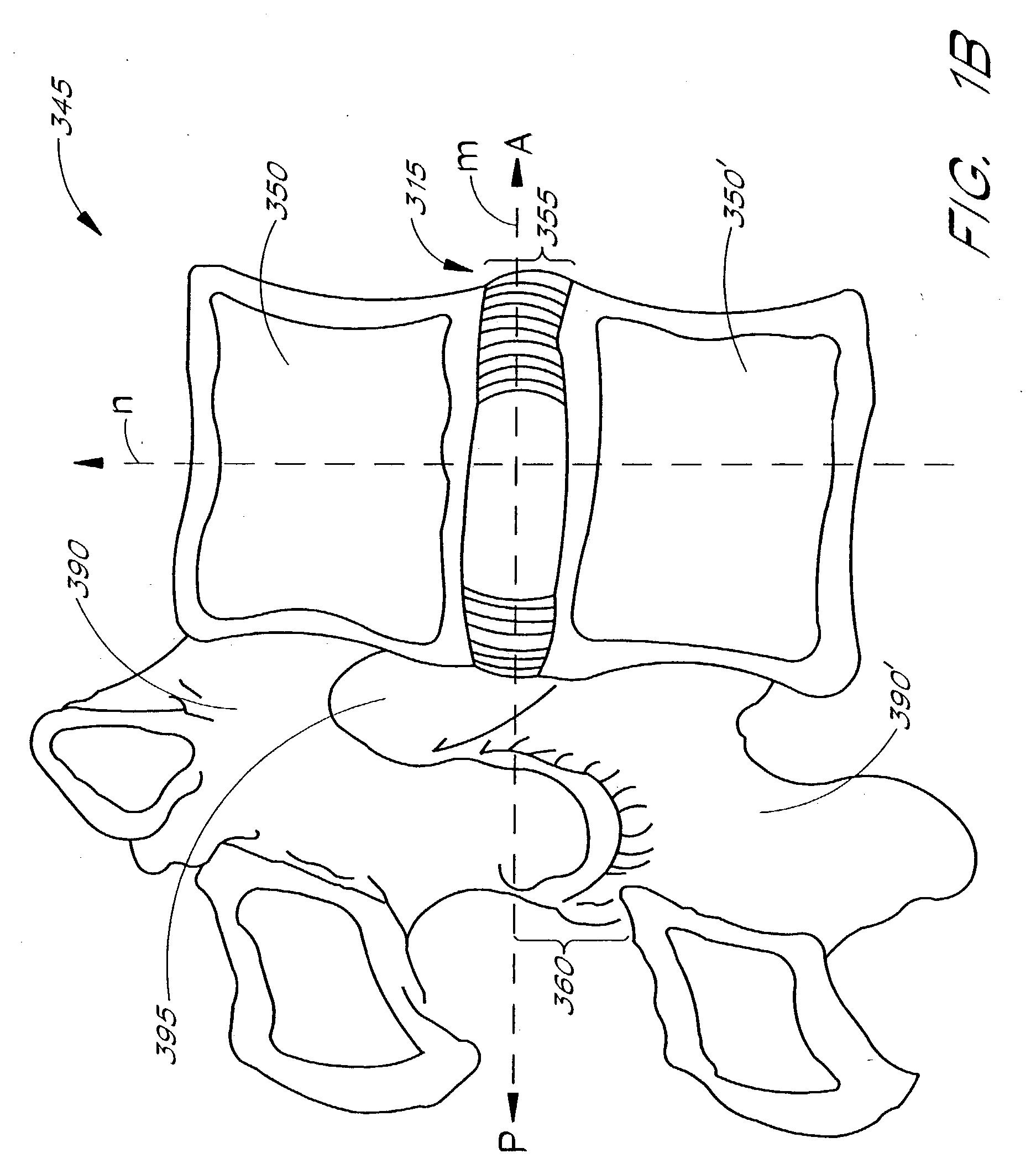Apparatus delivery in an intervertebral disc
a technology for intervertebral discs and apparatus, which is applied in the direction of osteosynthesis devices, prostheses, catheters, etc., can solve the problems of high invasiveness to abdominal organs, patient slipping, and devices that cannot be used to manipulate anular and nuclear tissue in a precise and minimally invasive manner, so as to facilitate patient guidance, facilitate the effect of guiding, and convenient and reliabl
- Summary
- Abstract
- Description
- Claims
- Application Information
AI Technical Summary
Benefits of technology
Problems solved by technology
Method used
Image
Examples
Embodiment Construction
[0054] In one aspect of the invention, there is provided a guide such as a hollow delivery cannula having a distal end and a proximal end. The guide is dimensioned to fit within a small anulotomy as might be created by a surgeon or through a naturally occurring hole or lesion in the anulus. An advancer, push rod, or actuator is axially moveably carried by the guide, and coupled to a flexible probe member. The flexible probe member has a proximal end connected to the advancer and distal end connected to or formed into a probe tip.
[0055] The probe is advanceable outwardly from the distal end of the cannula via axial movement of the advancer within the cannula. In the illustrated embodiment, the probe member exits through a slot having a curved pathway or deflection surface located at the distal end of the cannula and can be advanced outwardly therefrom generally at an angle of between about 30 to about 150 degrees relative to the cannula's longitudinal axis. Accordingly, when the dis...
PUM
| Property | Measurement | Unit |
|---|---|---|
| Angle | aaaaa | aaaaa |
| Length | aaaaa | aaaaa |
| Density | aaaaa | aaaaa |
Abstract
Description
Claims
Application Information
 Login to View More
Login to View More - R&D
- Intellectual Property
- Life Sciences
- Materials
- Tech Scout
- Unparalleled Data Quality
- Higher Quality Content
- 60% Fewer Hallucinations
Browse by: Latest US Patents, China's latest patents, Technical Efficacy Thesaurus, Application Domain, Technology Topic, Popular Technical Reports.
© 2025 PatSnap. All rights reserved.Legal|Privacy policy|Modern Slavery Act Transparency Statement|Sitemap|About US| Contact US: help@patsnap.com



